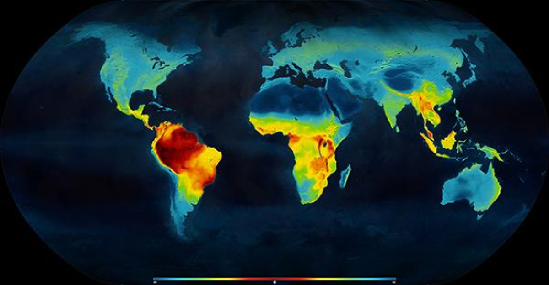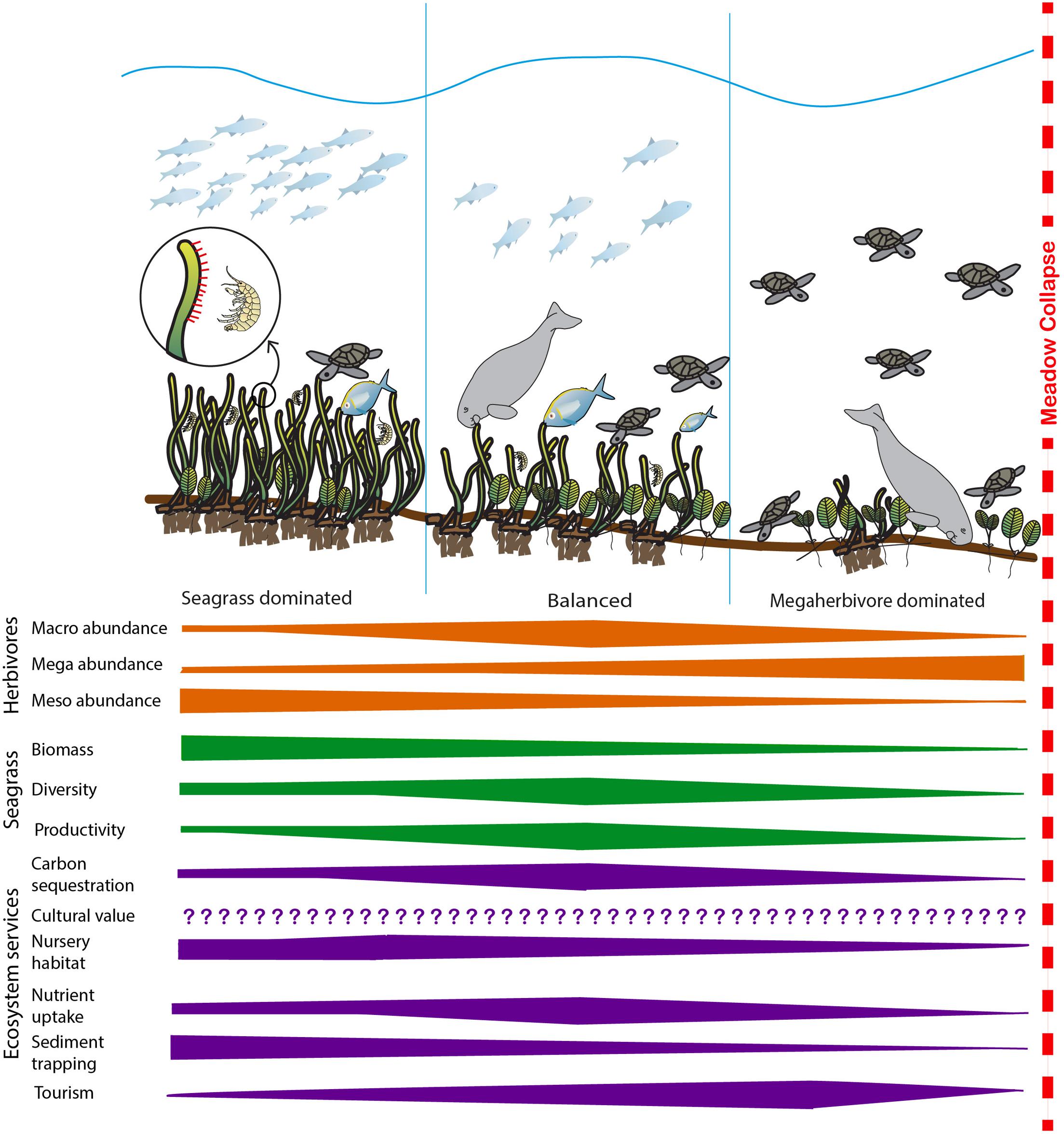|
Macroecology
Macroecology is a subfield in ecology that uses a methodological approach that investigates the empirical patterns and mechanistic processes by which the particulate components of complex ecological systems generate emergent structures and dynamics Brown, J.H. 1999. ''Macroecology: progress and prospect''. Oikos (1999): 3-14. Unlike traditional ecology, which focuses on local and small-scale interactions, macroecology seeks to identify general emergent patterns within and across spatial and temporal scales. One of the main tenets of macroecology is that, despite the apparent complexity and randomness of ecological systems, they exhibit a significant degree of order. This order is particularly evident in statistical patterns related to organism interactions, their relationships with the environment, and the emergent structures and dynamics of ecological systems. As put by Brown (1999),Brown, J.H. 1999. ''Macroecology: progress and prospect''. Oikos (1999): 3-14. "Despite their compl ... [...More Info...] [...Related Items...] OR: [Wikipedia] [Google] [Baidu] |
James Brown (ecologist)
James Hemphill Brown (born September 25, 1942) is an American biologist and academic known for his contributions to ecology. Brown is an ecologist and, as of 2001, a Distinguished Professor of Biology at the University of New Mexico. His research has focused on three main areas of ecology: # The population and community ecology of rodents and harvester ants in the Chihuahuan Desert. # Large-scale ecological patterns, including the distribution of body size, abundance, and geographic range of animals. This work led to the development of macroecology, a term coined in a paper Brown co-authored with Brian Maurer of Michigan State University. # The Metabolic Theory of Ecology, which seeks to explain ecological patterns based on metabolic principles. In 2005, Brown was awarded the Robert H. MacArthur Award by the Ecological Society of America for his contributions to the field, including his work on the metabolic theory of ecology. Between 1969 and 2011, Brown was awarded over $18 ... [...More Info...] [...Related Items...] OR: [Wikipedia] [Google] [Baidu] |
Latitudinal Gradients In Species Diversity
Species richness, or biodiversity, increases from the poles to the tropics for a wide variety of terrestrial and marine organisms, often referred to as the latitudinal diversity gradient. The latitudinal diversity gradient is one of the most widely recognized patterns in ecology. It has been observed to varying degrees in Earth's past. A parallel trend has been found with elevation ( elevational diversity gradient), though this is less well-studied. Explaining the latitudinal diversity gradient has been called one of the great contemporary challenges of biogeography and macroecology (Willig et al. 2003, Pimm and Brown 2004, Cardillo et al. 2005). The question "What determines patterns of species diversity?" was among the 25 key research themes for the future identified in 125th Anniversary issue of ''Science'' (July 2005). There is a lack of consensus among ecologists about the mechanisms underlying the pattern, and many hypotheses have been proposed and debated. A recent re ... [...More Info...] [...Related Items...] OR: [Wikipedia] [Google] [Baidu] |
Ecology
Ecology () is the natural science of the relationships among living organisms and their Natural environment, environment. Ecology considers organisms at the individual, population, community (ecology), community, ecosystem, and biosphere levels. Ecology overlaps with the closely related sciences of biogeography, evolutionary biology, genetics, ethology, and natural history. Ecology is a branch of biology, and is the study of abundance (ecology), abundance, biomass (ecology), biomass, and distribution of organisms in the context of the environment. It encompasses life processes, interactions, and adaptations; movement of materials and energy through living communities; ecological succession, successional development of ecosystems; cooperation, competition, and predation within and between species; and patterns of biodiversity and its effect on ecosystem processes. Ecology has practical applications in fields such as conservation biology, wetland management, natural resource m ... [...More Info...] [...Related Items...] OR: [Wikipedia] [Google] [Baidu] |
Science (journal)
''Science'' is the peer review, peer-reviewed academic journal of the American Association for the Advancement of Science (AAAS) and one of the world's top academic journals. It was first published in 1880, is currently circulated weekly and has a subscriber base of around 130,000. Because institutional subscriptions and online access serve a larger audience, its estimated readership is over 400,000 people. ''Science'' is based in Washington, D.C., United States, with a second office in Cambridge, UK. Contents The major focus of the journal is publishing important original scientific research and research reviews, but ''Science'' also publishes science-related news, opinions on science policy and other matters of interest to scientists and others who are concerned with the wide implications of science and technology. Unlike most scientific journals, which focus on a specific field, ''Science'' and its rival ''Nature (journal), Nature'' cover the full range of List of academ ... [...More Info...] [...Related Items...] OR: [Wikipedia] [Google] [Baidu] |
Populations
Population is a set of humans or other organisms in a given region or area. Governments conduct a census to quantify the resident population size within a given jurisdiction. The term is also applied to non-human animals, microorganisms, and plants, and has specific uses within such fields as ecology and genetics. Etymology The word ''population'' is derived from the Late Latin ''populatio'' (a people, a multitude), which itself is derived from the Latin word ''populus'' (a people). Use of the term Social sciences In sociology and population geography, population refers to a group of human beings with some predefined feature in common, such as location, race, ethnicity, nationality, or religion. Ecology In ecology, a population is a group of organisms of the same species which inhabit the same geographical area and are capable of interbreeding. The area of a sexual population is the area where interbreeding is possible between any opposite-sex pair within the a ... [...More Info...] [...Related Items...] OR: [Wikipedia] [Google] [Baidu] |
Communities
A community is a Level of analysis, social unit (a group of people) with a shared socially-significant characteristic, such as place (geography), place, set of Norm (social), norms, culture, religion, values, Convention (norm), customs, or Identity (social science), identity. Communities may share a sense of place situated in a given geographical area (e.g. a country, village, town, or Neighbourhood, neighborhood) or in virtual space through communication platforms. Durable good relations that extend beyond immediate genealogical ties also define a sense of community, important to people's identity, practice, and roles in social institutions such as family, home, work, government, TV network, society, or humanity at large. Although communities are usually small relative to personal social ties, "community" may also refer to large-group affiliations such as nation, national communities, international community, international communities, and virtual community, virtual communities ... [...More Info...] [...Related Items...] OR: [Wikipedia] [Google] [Baidu] |
Species Richness
Species richness is the number of different species represented in an community (ecology), ecological community, landscape or region. Species richness is simply a count of species, and it does not take into account the Abundance (ecology), abundances of the species or their Relative species abundance, relative abundance distributions. Species richness is sometimes considered synonymous with species diversity, but the formal metric species diversity takes into account both species richness and species evenness. Sampling considerations Depending on the purposes of quantifying species richness, the individuals can be Forest inventory#Simple random sampling, selected in different ways. They can be, for example, trees found in an forest inventory, inventory plot, birds observed from a monitoring point, or beetles collected in a pitfall trap. Once the set of individuals has been defined, its species richness can be exactly quantified, provided the species-level Taxonomy (biology), taxo ... [...More Info...] [...Related Items...] OR: [Wikipedia] [Google] [Baidu] |
Abundance (ecology)
In ecology, local abundance is the relative representation of a species in a particular ecosystem. It is usually measured as the number of individuals found per sample. The ratio of abundance of one species to one or multiple other species living in an ecosystem is referred to as relative species abundances. Both indicators are relevant for computing biodiversity. A variety of sampling methods are used to measure abundance. For larger animals, these may include spotlight counts, track counts and roadkill counts, as well as presence at monitoring stations. In many plant communities the abundances of plant species are measured by plant cover, i.e. the relative area covered by different plant species in a small plot. Abundance is in simplest terms usually measured by identifying and counting every individual of every species in a given sector. It is common for the distribution of species to be skewed so that a few species take up the bulk of individuals collected. Relative spe ... [...More Info...] [...Related Items...] OR: [Wikipedia] [Google] [Baidu] |
Biosphere
The biosphere (), also called the ecosphere (), is the worldwide sum of all ecosystems. It can also be termed the zone of life on the Earth. The biosphere (which is technically a spherical shell) is virtually a closed system with regard to matter,"Biosphere" in ''The Columbia Encyclopedia'', 6th ed. (2004) Columbia University Press. with minimal inputs and outputs. Regarding , it is an open system, with capturing |





